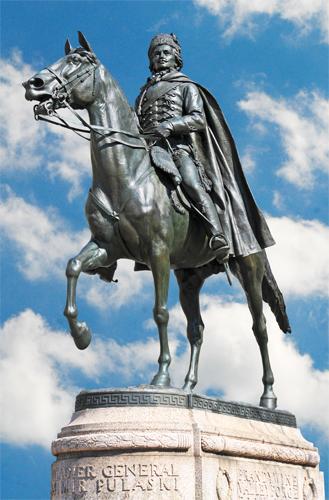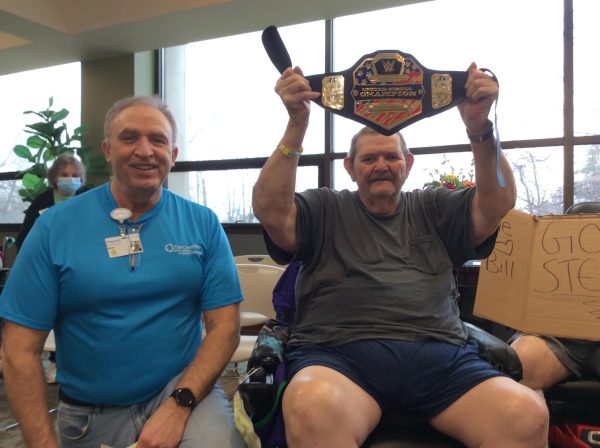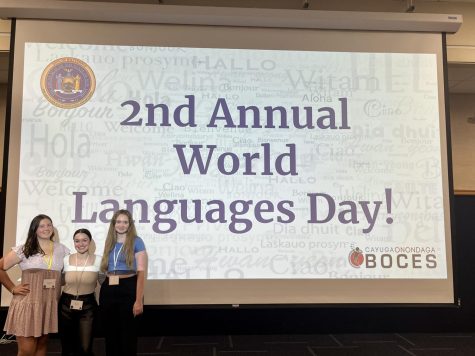Casimir Pulaski an Underappreciated Defender of American Freedom

March 3, 2015
Poland was once the most powerful empire in Europe,the sole defender against repeated Ottoman attempts to plunder the European continent. During the battle of Vienna, September 12, 1683 Polish forces mounted the largest cavalry charge in human history, 18,000 horsemen 3,000 of which were Winged Hussars, charged the Ottomans who outnumbered the Poles immensely. King of Poland Jan III Sobieski led the charge. The charge easily broke the lines of the Ottomans, who were exhausted and demoralized so they soon started to flee the battlefield.
The cavalry headed straight for the Ottoman camps and their commander, Kara Mustafa’s, headquarters. Shortly before his defeat, Kara Mustafa panicked and ordered the execution of 30,000 Christian Vienna hostages.
Polish forces suffered 4,500 deaths by the end of the battle while the Ottomans lost 60,000 men.
Afterwards King Sobieski paraphrased Julius Caesar’s famous quotation “Veni, vidi, vici” by saying “Veni, vidi, Deus vicit” – “I came, I saw, God conquered.” The Battle of Vienna is commemorated on the Tomb of the Unknown Soldier, Warsaw, Poland, with the inscription “WIEDEN 12 IX 1683”.
Soon after this crushing defeat, the Ottomans disposed their broken commander. On 25 December 1683, Kara Mustafa was executed in Belgrade in the approved manner, by strangulation with a silk rope pulled by several men on each end.
But by the 1760s, however, this once-proud European world power was just a hollow shell of its former might. Reduced to serving as a Vassal of the Russian Tsar Catherine “The Great”, Poland’s leaders were all hand-picked by the Tsar, and anyone who opposed their new Russian overlord could expect to find themselves rotting in a Moscow dungeon, or dead. The Tsar called the shots, forced the Polish Parliament to pass whatever laws she thought sounded interesting, and basically just told the entire country bend to her will or she’d pummel them into submission with the largest military force in Europe.
Casimir Pulaski wasn’t a man who liked it when people told him the odds. And he did not fear the oppressive power of Tsarist Russia – he was a proud member of the Polish aristocracy, a man who had been honing his riding and shooting skills since he was eight years old, and he decided that no Russian was going to push him around just because they were capable of fielding an army that would outnumber the entire population of his country. So, in 1763, at the age of 15, Pulaski, his father, both his brothers, and 300 other noblemen raised an army, revolted against the Tsar, and declared open rebellion against Russian tyranny throughout Poland.
Pulaski was captured by the Russians in one of his first battles, because he had spurred his horse on and charged straight-on despite being badly outnumbered and outgunned. The Russians threw him in prison, but the Russians could also not execute him; he was too popular with the peasants and his execution could cause further uprisings. Eventually they told him they’d release him if he swore an oath to stop fighting them and dissolve his army. Pulaski agreed, but as soon as they let him go he immediately re-joined the rebellion with a new found militaristic zeal. Riding up and down the countryside launching lightning raids on Russian forts, garrisons, and supply depots, Pulaski quickly became famous throughout Europe for his daring attacks,charging into enemy camps on horseback in a blaze of musket smoke and blood-stained swords, riding down anyone traveling slower than his steed.
For almost a decade Casimir Pulaski battled the Russians in an endless string of skirmishes, pitched battles, and guerilla raids across Poland. Appointed commander-in-chief of revolutionary forces in 1768, Pulaski still continued to lead his armies from the front lines, personally launching a night raid on Krakow, defending the fortified cloister at Czestochowa from a full-scale Russian assault, and breaking the siege of Starokonstanty now with about a hundred men.
In his wild melees against enemy cavalry and artillery units, he was shot in the arm and slashed in the hand by a Cossack’s saber. He was later captured by the Turks and the Russians, escaped from both, shortly afterward winning a major pitched battle against the Tsar’s forces.
Pulaski even took part in a failed attempt to abduct the King of Poland Stanisław II(Catherine the great’s former lover) and force him to Rally the Polish people against their Russian oppressors.
When Pulaski’s father and brothers were killed in battle, he assimilated their units into his own. When the King Stanisław II confiscated Pulaski’s land, stripped him of his wealth, and declared him an outlaw and an enemy of the Polish people, this determined patriot fled to Turkey, enlisted in the Turkish Army, and participated in a three-month campaign against the Russians that left the Crimean peninsula burning.
Unfortunately for Pulaski, his revolution was eventually crushed by the overwhelming power of the enemy. in 1772, Russia, Prussia, and Austria began negotiations to partition of poland, he and the other revolutionaries saw the futility of continuing the struggle. In the face of the charges against him, he was forced to flee his homeland, He would never see it again.
Penniless, wounded, and unable to find an army, Pulaski escaped to Paris, where he lived in poverty, and spent some time in debtors’ prison. Then, in 1775, the defeated cavalryman met Benjamin Franklin who happened to be seeking military commanders to help his fledgling revolution in its struggle for independence. Franklin was impressed by Pulaski, and wrote of him: “Count Pulaski of Poland, an officer famous throughout Europe for his bravery and conduct in defence of the liberties of his country against the three great invading powers of Russia, Austria and Prussia … may be highly useful to our service.” Pulaski, already renowned as one of the best guerilla cavalry commanders in Europe, heard Franklin’s plea, Pulaski, impressed with the ideals of a new nation struggling to be free, volunteered his services. Franklin wrote to George Washington describing the young Pole as “An officer renowned throughout Europe for the courage and bravery he displayed in defense of his country’s freedom.”
In 1777, Pulaski arrived in Philadelphia where he met General Washington, Commander-in-Chief of the Continental Army. After his arrival, Pulaski wrote to Washington, “I came here, where freedom is being defended, to serve it, and to live or die for it.” Pulaski was appointed commander of George Washington’s personal bodyguard force. In Pulaski’s first military engagement on September 11, 1777, at the Battle of Brandywine, the British broke through American lines and started bearing down on Washington himself. When the Continental Army troops began to yield ,Pulaski unhesitatingly led the 30-man bodyguard unit straight into combat, charging the rapidly-closing enemy while still wearing the military dress uniform of the Polish Hussars. Pulaski was wounded in the melee, but is credited with averting a disastrous defeat of the Continental Army and saving the life of the commander-in-chief of Continental Forces and the future First President of the United States. Washington rewarded his heroism by inducting the Polish nobleman into the brotherhood of Freemasons, and through Washington’s intervention, Congress approved the establishment of the Continental army’s Cavalry and put Pulaski at its head. Pulaski was appointed Brigadier-General in charge of Four-Horse Brigades.
General Pulaski responded to this honor by writing the manual for American cavalry tactics, strategy, training, and organization, basing it largely on time-honored Polish cavalry customs dating back to the days of the Winged Hussars who were the Elite forces of the Polish military calvary, feared throughout Europe for their ruthless tactics style and disregard for their own safety in the heat of battle. Some of the fundamentals set up by Pulaski are still employed in current U.S. cavalry operations, a detail that usually gets Pulaski referred to as “The Father of American Cavalry”. Pulaski often used his own personal finances, when allocations from Congress were scarce, in order to assure his forces of the finest equipment available.
Pulaski continued to prove himself in battle against the loyalists time and time again, slaying the Redcoats with his blade any time he could find them. At the Battle of Germantown, Pulaski’s knowledge of warfare assisted General Washington and his men in securing victory for American forces. He set up a secure perimeter around Valley Forge while the army was in winter quarters. He assisted Anthony Wayne in a attack that captured the town of Haddonfield from the British. Despite being placed in overall command of every Colonial Cavalry Unit in America, Pulaski was always there on the front lines leading in the most dangerous of charges.
When George Washington suggested that the Overall Commander of American Cavalry Forces shouldn’t “Be at the head of his men charging enemy towns with a sword raised over his head,” Pulaski resigned his post and requested permission from Congress to set up his own independent mercenary unit that could act without military or Congressional oversight whatsoever.
The result ,Pulaski’s Legion – six companies of cavalry and infantry comprised of Maryland militiamen, disenfranchised British deserters, and soldiers of fortune from Ireland, Germany, Poland, and France. Equipped with the best swords, armor, and guns Pulaski could afford with his own personal funds ,which were quite extensive once his sister managed to free up the holds that were placed by king Stanisław II, these men were notable because they employed two companies of Lancers – which employed mounted soldiers charging across the battlefield with lances, like a feudal knights, then pulling out pistols and muskets and dispatching enemies at close range when need be. Charging into combat under a banner hand-embroidered by Moravian nuns from Bethlehem, PA, Pulaski raided British camps in New Jersey, Pennsylvania, Delaware, and South Carolina, charging anyone he could find with reckless abandon, without orders or any regard for his own safety.
Casimir Pulaski’s last ride came on Oct. 9, 1779, during his defense of the British attack during the siege of Savannah. Despite being heavily outnumbered by a huge force of redcoats, Pulaski knew his only options were to surrender or launch a blaze of glory death charge. So, without thinking twice, the former Commander of American Cavalry Forces and Defender of Polish and American freedom launched a headlong assault straight into the teeth of the enemy, hoping that his attack would rally the morale of his troops to fight even harder and hold the city.
charging into battle on horseback, he fell to the ground mortally wounded by the blast of a cannon. Pulaski’s enemies were so impressed with his courage, that they spared him the musket and permitted him to be carried from the battlefield. He was carried away by his soldiers and placed on a ship named The Wasp to get medical help. But he died two days later on October 11, 1779, and his body was buried at sea.
America has always recognized Pulaski’s heroism and the price he paid for their freedom. Shortly after his death a solemn memorial service was held in Charleston, and, before the end of 1779, the Continental Congress resolved that a monument should be erected in his honor, though a statute was not put into place in Washington, D.C., until 1910.
Over the years Americans have kept alive his memory naming many counties, towns, cities, streets, parks, schools, stamps, postal cards, and squares after him. Among those of Polish descent, his fame rivals that of Kosciuszko, who, after his service in the American Revolutionary War, returned to his homeland, where, in 1794, he led an insurrection against the same Russian domination that Pulaski had fought before coming to America.
The Cold War American nuclear ballistic missile submarine, the USS Pulaski was named in his honor that means that if we had actually gone to Thermonuclear War with the Soviets in the 1980s, then Pulaski would have had the last laugh in his life-or-death vendetta with the Russians. In 2009 President Obama granted Posthumously honorary U.S. citizenship to Pulaski 230 years after his death, making Casimir Pulaski one of only eight others to be given this honor.
Casimir Pulaski Day is a state holiday observed in Illinois on the first Monday of every March in memory of Casimir Pulaski ,The day is celebrated mainly in areas that have large Polish populations, such as Chicago, The focus of official commemorations of Casimir Pulaski Day in Chicago is at the Polish Museum of America where various city and state officials congregate to pay tribute to Chicago’s Polish Community.
Columbia College historian Dominic Pacyga says Pulaski considered the American Colonists’ fight for independence from Great Britain as similar to Poland’s own struggle for independence.
Pulaski remained a great hero in his homeland as well, a sentiment that wasn’t forgotten when Poles began arriving in the United States. If Pulaski hadn’t had a community that respected his achievements, who knows if there would have been Casimir holiday.
As early as the 1930s, Polish Americans in Chicago lobbied for public recognition of Casimir Pulaski. Their first major victory was a declaration, in 1933, that the former “Crawford Road” in Chicago would now be “Pulaski Road.” According to Dominic Pacyga, many of the merchants and the shopkeepers in the area were not happy about the new name. “They have to change letterheads, they have to change addresses, they have to mail out letters saying they’re no longer on Crawford Road.” For more than a decade, the issue remained contentious.
Much of Chicago’s Polish-American history, including the importance of Pulaski, is preserved at the Polish Museum of America. The museum, which occupies much of the headquarters of the Polish Roman Catholic Union of America, sits on Milwaukee Avenue in Chicago, near the traditional “Polish downtown.” Malgorzhata Kot, the museum’s managing director, says Polish Americans relate to Pulaski because he was a soldier. He fought for freedom and independence in Poland and America, and he had to fight for acceptance when he came to America. She says Polish Americans relate to those struggles, and see them as at the center of their history. “Casimir Pulaski is a symbol of a Pole who was important in Poland, who risked it all to come here and fight for your freedom and ours.”
In the 1970s, the Polish American Congress in Chicago took up the cause of a statewide Casimir Pulaski holiday. In 1977, they succeeded in getting a law passed designating the first Monday in March “Casimir Pulaski Day.” Every year on Pulaski Day, the president of the Polish Roman Catholic Union, currently Joseph Drobot Jr., presides over a formal ceremony honoring Casimir Pulaski. The Great Hall at the museum can hold up to 500 people, and he says it’s usually full during the ceremony. There’s an honor guard in traditional bright red and blue 18th century polish cavalry uniforms. The event is open to the public and there’s free Polish food. According to Drobot, “This being an election year, there will be many politicians. It’s an opportunity to be seen.”
The ceremony is always held in front of the centerpiece of the Museum’s Great Hall: a fifteen- foot-wide painting of Casimir Pulaski, painted by Stanislaw Batowski, It depicts Pulaski’s mortal wounding at Savannah.
Pulaski is often referred to as a “count”. This is likely an artifact of some well-publicized American letters and statements in which he is titled as such, in particular, Benjamin Franklin’s letter of 1777. Americans of that era had a habit of giving such grandiose titles to all European nobles In reality, Pulaski was never a count; just a regular member of the Polish nobility Pulaski never used this title himself.









